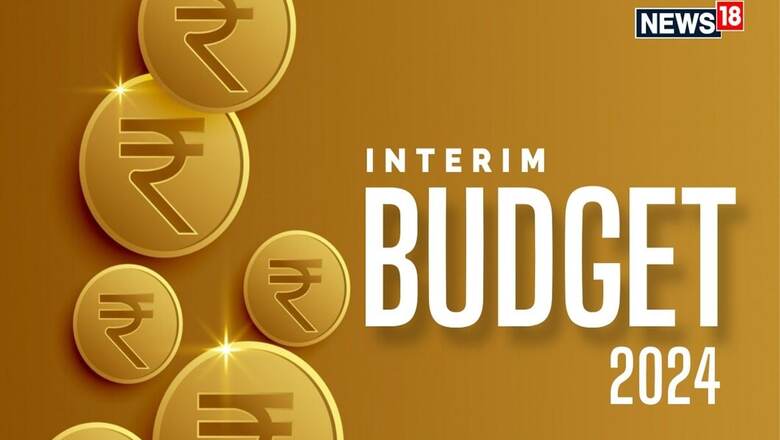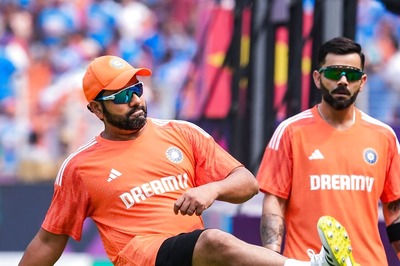
views
Budget 2024 Expectations: India’s upcoming budget, set to be presented on February 1st, 2024, has generated significant anticipation in the healthcare sector. While it’s an interim budget due to the upcoming general elections, the healthcare industry still has high hopes for positive changes.
It’s important to note that these are just expectations, and the actual budget allocations and measures remain to be seen.
Here are some key expectations:
Ravi Ramaswamy, chair, healthcare working group, IET Future Tech Panel, suggests the following;
- Incentivise shifting the burden of diagnostics forward to FLHWs through considered use of technology solutions that meet with ICMR and CDSCO guidelines and allow accelerated screening, diagnostics, and delivery while facilitating collection, collation and leverage of health data and enhancing FLHW earnings at the same time
- Facilitate the adoption of very large annuity model based commercial pilots for technology leveraged last mile delivery of primary health care (especially for NCD) through policy, direct fund allocation, and incentivisation
- Encourage private sector participation in technology based healthcare delivery via the development of digital infrastructure under annuity models
- Result-based incentive models on healthcare research on higher efficiency products with direct demonstrable impact on primary healthcare delivery
- Incentives for development of personalised medicine delivery models with focus on NCDs
- Drive the implementation and adoption of the Health Stack. Bring in policies in the context of conformance to standardisation and inter-operability thereby helping facilitate portability of patient data
- Revision of GST rates and reduction of import tariff for diagnostic industry
- Allocate resources for enhancing pandemic preparedness, including stockpiling essential medical supplies, strengthening testing and surveillance infrastructure, and investing in research and development for vaccines and treatments.
- Invest in the construction and upgrading of healthcare facilities, including hospitals, clinics, and primary health centres, especially in underserved areas.
- Promote the development and implementation of digital health solutions to improve healthcare delivery, telemedicine services, and health data management.
- Increase funding for medical education and training to address the shortage of healthcare professionals, including doctors, nurses, and paramedical staff.
- Emphasise preventive healthcare by allocating resources to public health programs, vaccination campaigns, and awareness initiatives to reduce the burden of preventable diseases.
- Allocate funds for improving healthcare services in rural areas, including the establishment of new healthcare facilities and the deployment of mobile healthcare units. Case in point : Management of Chronic Kidney diseases, Autonomous mammograms for Breast cancer screening and the like
- Stimulate local production of medical devices thro PLI schemes
- Explore partnerships with the private sector to leverage their expertise and resources in expanding healthcare services.”
Healthcare Spending & Medical Tourism
Yatharth Tyagi, director, Yatharth Group of Hospitals, said, “We expect an enhanced healthcare spend of 2.5% of GDP to expand access and infrastructure. Backed by technology and innovation, schemes promoting medical tourism and digitisation can position India as a healthcare hub for the world, creating jobs for our youth.”
Budgetary Incentives For Private Players
Tyagi highlighted that progress on GST for affordable equipment and nil rates on essential services will drive affordable treatment measures and inclusivity in healthcare.
“Increased budgetary incentives for private players to strengthen healthcare in aspirational districts will actualise the motto of ‘Sabka Saath Sabka Vikas’,” Tyagi said.
Public-Private Partnerships
Joseph Pasangha, Group COO, SPARSH Hospital, said, “A strategic distribution of resources, along with tax benefits and incentives for both innovation and infrastructure development, will not only enhance the quality of patient care but also strengthen the entire healthcare ecosystem. To make healthcare more reasonably affordable, the sector requires relief. We expect clear and efficient processes for selecting, implementing, and monitoring Public-Private Partnerships (PPPs).”
Pasangha also added, “Well-defined guidelines and a cooperative approach between public and private entities can nurture successful partnerships, addressing crucial healthcare needs nationwide. A heightened emphasis on robust policy support is crucial to further cultivate medical value travel to India in the current scenario.”
Rural Healthcare
Barkha Amin, trustee, Bhailal Amin General Hospital, Vadodara, said, “As Bharat continues to prosper as a global healthcare destination, there is a considerable vacuum at the rural front of Gujarat and India when it comes to healthcare infrastructure. As an industry, we seek 3% of GDP allocation towards uplifting the medical and healthcare ecosystem, especially in the rural counterparts.”
“Secondly, we expect the finance ministry to consider a cut on custom duties on imported medical devices to 2.5%, to enable the hospitals and other healthcare institutions to derive the benefits of input tax credit on the imports. This will further drive a wave of motivation for the healthcare ecosystem not just of Gujarat, but the overall country to upgrade to technology-led hospitals. This in turn, will further strengthen the position of India as a healthcare destination across the world,” Amin added.




















Comments
0 comment